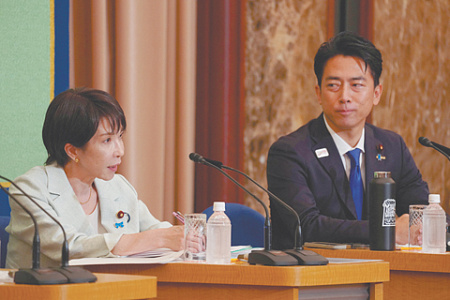
Japan’s ruling Liberal Democratic Party (LDP) is poised to select a new leader this week in a contest that could shatter a major glass ceiling in the nation’s history. The winner is highly likely to become the next prime minister, and for the first time, that could be a woman: the nationalist conservative Sanae Takaichi. Her main rival, Shinjiro Koizumi, would, at 44, become the country’s youngest premier in a century, setting the stage for a dramatic political shift regardless of the outcome.
The leadership election was triggered by the resignation of Prime Minister Shigeru Ishiba, who stepped down after the party’s poor performance in upper house elections. Although the LDP and its coalition partner Komeito lost their majority, the opposition remains deeply fragmented across nine parties. This political reality ensures the LDP, as the single largest party, will almost certainly see its new leader installed as Japan’s head of government.
The race has narrowed to three main contenders, but the focus is on the stark contrast between the two frontrunners. Takaichi, a former Minister for Economic Security, is a protégé of the late, hawkish Prime Minister Shinzo Abe. Koizumi, the current Agriculture Minister, represents a more liberal wing of the party. The third candidate is the Chief Cabinet Secretary, Yoshimasa Hayashi.
Takaichi’s candidacy is particularly noteworthy in a nation that, despite its economic development, remains deeply patriarchal. Having run unsuccessfully in 2024, she is known for her strong nationalist views, advocating for a significant military buildup and a revision of Japan’s pacifist constitution. Her economic platform is a continuation of “Abenomics,” the policy mix of monetary easing and fiscal stimulus that defined Abe’s tenure.
Koizumi, on the other hand, is seen as a break from the Abe era. As the son of the popular former Prime Minister Junichiro Koizumi, he carries a powerful political legacy and is credited with recently stabilizing the price of rice, a staple food. However, his campaign was recently hit by a minor scandal after his staff were found to have solicited positive online comments, for which he publicly apologized, potentially diminishing his chances.
Recent polling by the Yomiuri Shimbun newspaper shows Koizumi leading among both LDP parliamentarians and rank-and-file party members, with around 40% support. Takaichi trails with 25-28%, suggesting that no candidate will secure an outright majority in the first round, making a run-off election highly probable.
Despite the domestic political drama, foreign policy experts anticipate little change in Japan’s international posture. According to Valery Kistanov, head of the Center for Japanese Studies at the Institute of China and Contemporary Asia, the country’s foreign policy direction is firmly set. The primary focus for any new leader will be strengthening the security alliance with the United States.
The main external challenges will also remain consistent. The new prime minister will inherit a security environment dominated by perceived threats from the strategic alignment of China, North Korea, and Russia. Furthermore, potential demands from the U.S. to drastically increase defense spending and the uncertain fate of a major tariff deal will be immediate concerns on the new leader’s agenda.
Relations with Moscow, in particular, are expected to remain frozen. All three leading candidates have been under Russian sanctions since 2022, banning them from entering the country. Tokyo’s policy of providing financial and non-lethal aid to Ukraine is set to continue, ensuring that tensions with Russia will be a defining feature of the new prime minister’s term from the outset.
